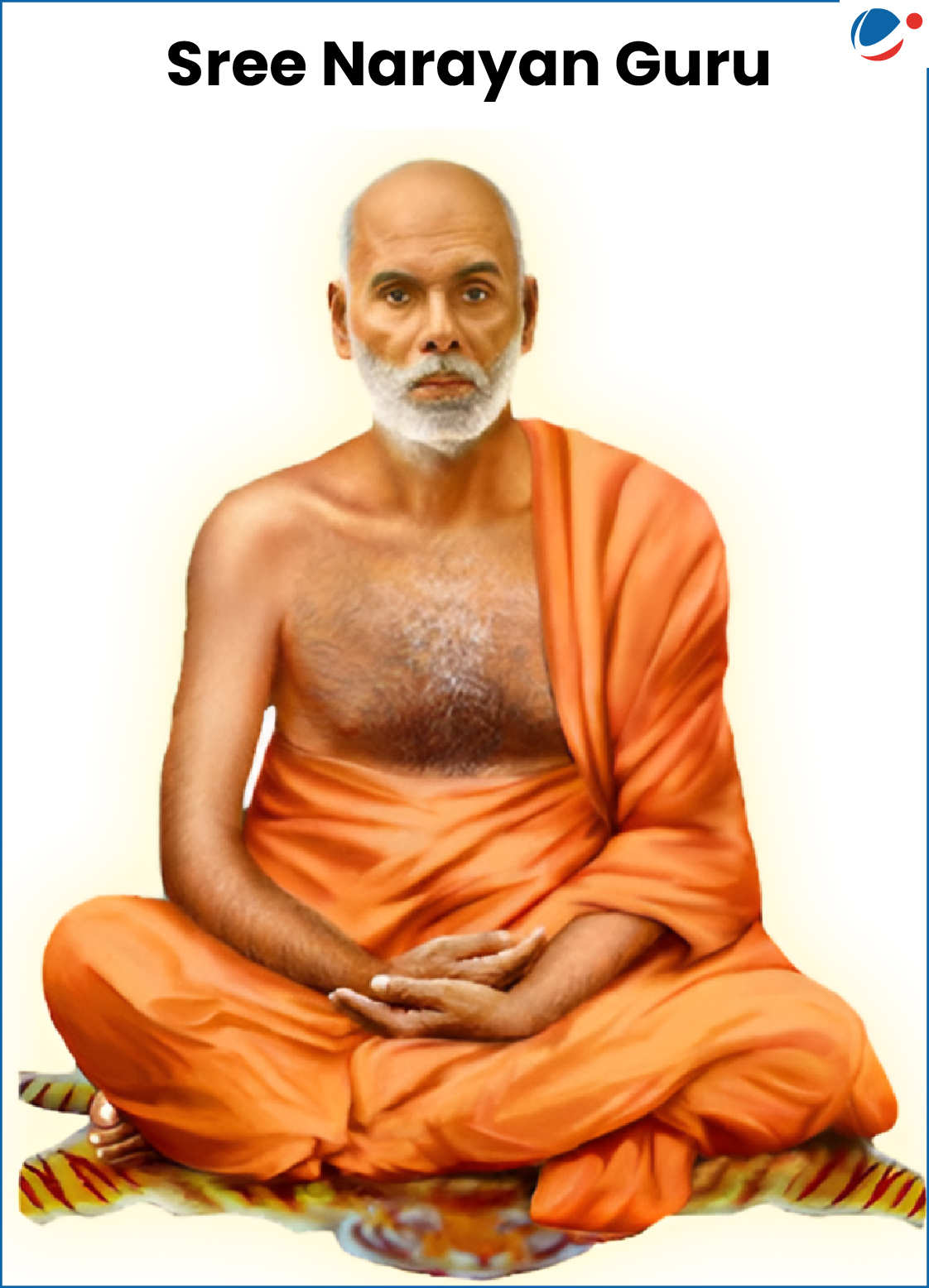
Why in the News?
The President inaugurated the observance of the Mahasamadhi centenary of Sree Narayana Guru in Kerala.
About Sree Narayana Guru (1856–1928)
- Birthplace: He was born in Chempazhanthy (near present-day Thiruvananthapuram) to Ezhava family.
- Ezhava is a backward untouchable community which faced social injustice in the caste-ridden Kerala society.
- Key Details:
- He was a saint, philosopher, poet, spiritual leader and social reformer who revolted against caste system.
- He was commonly known as Gurudevan among his followers.
Key Contributions
- Teachings and principles:
- He emphasized self-purification, simplicity, and universal love.
- Emphasized the principle of "One caste, One Religion, One God for all human beings."
- Real liberation comes from knowledge and compassion, not from blind faith.
- He considered education as the only means to human progress and prosperity and the supreme panacea for all social evils like superstitions and unhealthy tradition.
- He advocated equal opportunity for women and began the number of schools all over Kerala.
- He founded the Advaita Ashram at Aluva in 1913.
- This Ashram was dedicated to Om Sahodaryam Sarvatra (all men are equal in the eyes of God).
- Key Contributions:
- Temple Entry: He launched the Aruvipuram movement for equal rights to temple entry.
- In 1888, Sree Narayana Guru took a plunge into the Neyyar River and emerged with a Sivalinga.
- He consecrated it in a makeshift temple, breaking the centuries-old barriers of caste-based discrimination in worship.
- This symbolized the empowerment of marginalized communities, granting them the right to worship.
- Temple Entry: He launched the Aruvipuram movement for equal rights to temple entry.
- Ezhava Community: He established an organization, later called the Sri Narayana Dharma Paripalana Yogam for upliftment of Ezhava community in 1903.
- This movement was based on the approach of reinterpreting Hindu religion in search of self-determination.
- The new ideology was based on the principle of self-respect, honour and worth of individual.
- It was an ideology of protest against the Brahminical values system of hierarchy and pollution.
- He established a parallel source of legitimacy by establishing new institutions like temple priest, monk and monasteries.
- Vaikom Satyagraha: He lent support to Vaikom Satyagraha for temple entry (1924-25) in Travancore.
- It was a historic non-violent temple entry protest that began in Vaikom, a town in the princely state of Travancore (Kerala region) against untouchability and caste discrimination.
- It was in a response to the discriminatory exclusion of "lower caste" Hindus from accessing the Vaikom Mahadeva temple.
- T.K. Madhavan, K.P. Kesava Menon and K. Kelappan (also known as Kerala Gandhi) are considered the pioneers of the Vaikom Satyagraha movement.
- Works: Anukamba Dasakam, Brahmavidya Panchakam, Asramam, Bhadrakaliashtakam, Atmopadesa Satakam, Advaitha Deepika, Daiva Dasakam, etc.
Conclusion
Sree Narayana Guru's life and teachings stand as a symbol of social equality, spiritual enlightenment, and human dignity. Through his reformist movements, temple-entry initiatives he challenged entrenched caste hierarchies and inspired generations toward justice and harmony.



